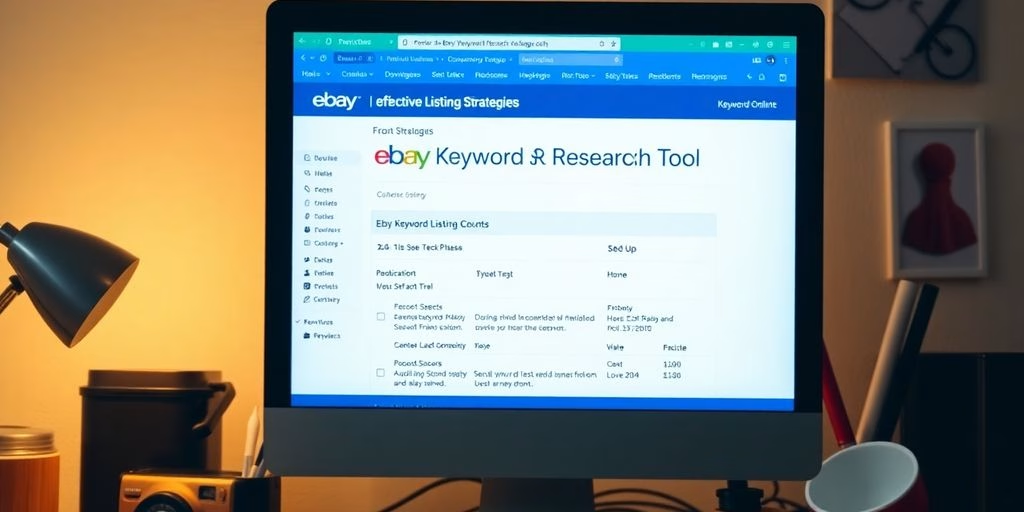Websites fight for attention amidst a constant roar of information. To rise above the noise and attract users, mastering the art of search engine optimization (SEO) is crucial. Among the many factors influencing your website’s ranking, the humble title tag stands as a mighty warrior in the optimization battle. This simple title tag is the key to improving your ranking. Read on to learn how to put this tip to work for your business.
Table of Contents
ToggleKey Takeaways
- A compelling title tag acts as a billboard for your website, making a strong first impression and determining whether users click or scroll past.
- Incorporating keywords effectively in your title tag can improve your search engine rankings and increase the visibility of your content.
- Regularly updating and optimizing title tags, meta descriptions, and URLs are essential for staying relevant and competitive in search results.
- Title tags have a significant impact on user experience and brand recognition, influencing user trust and the likelihood of content being shared on social media.
- Advanced SEO strategies involve understanding user intent, leveraging seasonal trends, and measuring the success of title tags to refine and improve your approach.
The Anatomy of a Title Tag: More Than Just a Label

Decoding the DNA of Title Tags
Peeling back the layers of a title tag reveals its critical role in the digital ecosystem. It’s not just a label; it’s a beacon for search engines and users alike, guiding them through the vast sea of online content. At its core, a title tag should be a succinct summary of the page’s content, but there’s an art to balancing the essential elements:
- Keyword Optimization: Start with a keyword that resonates with your audience and search engines.
- Brand Recognition: End with your brand name, using a separator like a hyphen or vertical slash for clarity.
- User Engagement: Craft a message that speaks to the user’s needs and curiosity.
By mastering these components, you create a title tag that not only ranks well but also compels users to click. Remember, a well-crafted title tag is a silent salesman, working tirelessly to promote your content across the digital landscape.
Why Your Title Tag Can Make or Break User Engagement
In the digital jungle, websites vie for the attention of users who are bombarded with a constant stream of information. Your title tag is the spearhead of your content’s visibility, a beacon that guides users through the search engine wilderness. It’s not just a matter of standing out; it’s about making a promise that your content fulfills, thus delivering a great user experience.
- Deliver a Great User Experience: Clear and accurate titles set expectations and build trust. When users find what they’re looking for, they’re happy and more likely to stick around.
- Strengthen Brand Recognition: Include your brand name in your titles to become a familiar face in search results, building brand awareness and recall.
- Spread the Word on Social Media: When your content gets shared, the title tag often becomes the main attraction. Make it shareable to amplify your reach and impact.
Crafting compelling meta descriptions by balancing clarity and creativity, avoiding keyword stuffing and vagueness, is just as crucial as the title tag itself. Regularly refine based on analytics for SEO success.
Remember, the title tag is the narrative that complements your content, enticing users with a summary of what they’ll find on your page. It’s the difference between a user clicking through or passing by. As such, it’s essential to leverage this element to its fullest potential, ensuring that it accurately represents the content and resonates with the intended audience.
The Title Tag’s Role in the SEO Ecosystem
In the vast savannah of the internet, the title tag is the king of the SEO ecosystem, a beacon guiding the digital wildlife—users and search engines alike—to the watering holes of content. Optimize your website for search engines by focusing on unique meta titles, avoiding keyword stuffing, and prioritizing on-page optimization for better user experience.
The title tag, often a user’s first encounter with your site, can be the difference between a click and a pass. It’s not just a front-end facade; it’s a critical signal to search algorithms, whispering the secrets of your content into the ever-listening ears of search bots.
Crafting a title tag that resonates with both humans and algorithms is a delicate dance. Here’s a quick checklist to ensure your title tags are up to the task:
- Reflect the core message of your page
- Incorporate relevant keywords strategically
- Maintain a character count within the sweet spot (50-60 characters)
- Be mindful of branding and consistency
For those with Shopify pages, remember that they have built-in SEO setup for product pages. Guidelines for writing effective title tags include uniqueness, specificity, keyword usage, and a character limit of 60.
Crafting Title Tags That Captivate and Convert

The Art of Balancing Brevity and Descriptiveness
Mastering the title tag is akin to walking a tightrope. On one side, there’s the need for brevity to ensure your title fits neatly in the search engine’s embrace. On the other, descriptiveness beckons, promising users a glimpse into the content’s soul. The sweet spot lies in the middle, where every character counts, and every word earns its place.
- Uniqueness: Stand out with an original angle or insight.
- Relevance: Tailor your title to your audience’s curiosities.
- Depth: Show mastery by delving into the subject matter.
- Readability: Craft clear, jargon-free sentences.
Balancing SEO optimization with engaging content is not just a skill, but an art form. It’s about painting a picture with words that both search engines and readers can admire.
Remember, while the title tag is your first handshake with the user, it’s also a silent nod to the search algorithms. By weaving in relevant keywords and maintaining clarity, you create a title that resonates on both fronts. It’s not just about being found; it’s about being remembered.
Incorporating Keywords Without Sacrificing Creativity
Mastering the art of title tag creation is akin to walking a tightrope between SEO and creativity. Utilize keyword research tools to pinpoint the perfect balance, ensuring your titles are not only found but also clicked. Remember, a title tag is your first handshake with the searcher; make it count.
- Use Separators Wisely: Vertical bars or hyphens can improve readability and clarity.
- Avoid Keyword Stuffing: Focus on natural language and readability.
- Hook Them In: Use strong verbs, numbers, and intriguing questions to grab attention and spark curiosity.
Craft compelling titles and meta descriptions to attract users and improve CTR in SEO.
While keywords are the compass that guides search engines to your content, creativity is the beacon that draws in your audience. It’s a delicate dance of giving search engines what they want, without turning your title tag into a robotic string of search terms. The goal is to entice, inform, and engage.
Testing and Tweaking: The Cycle of Title Tag Perfection
In the quest for the perfect title tag, one must embrace the art of iteration. Testing and tweaking your title tags is not just a one-off task; it’s a relentless pursuit of perfection. Imagine your title tag as a living, breathing entity in the vast ecosystem of the web, constantly evolving to adapt to the changing environment.
- Start by analyzing the performance of your current title tags. Are they enticing enough clicks?
- Experiment with variations, incorporating both creativity and strategic keywords.
- Use A/B testing to compare different versions and identify which resonates best with your audience.
- Keep an eye on the metrics, but don’t be a slave to them. Sometimes, the most magnetic titles defy conventional wisdom.
Remember, the goal is to find that sweet spot where descriptiveness meets brevity, and where keywords meet the curiosity of the user.
As you refine your titles, consider the insights gleaned from industry experts. A title tag, as Hurrdat Marketing suggests, is an essential part of your SEO strategy. It’s about blending technical optimization with creative content strategies to master on-page SEO. And never forget, the journey to title tag mastery is ongoing. The digital landscape is ever-changing, and so should your approach to crafting the gateways to your content.
Navigating the Backend: Title Tags Behind the Scenes

Title Tag Territory: Locating and Editing in Your CMS
Embarking on the quest to locate and edit your website’s title tags can feel like navigating a labyrinthine digital jungle. But fear not, intrepid SEO adventurers, for the path is well-trodden and marked by the helpful signs of your Content Management System (CMS).
The title tag lives within the head section of your website’s HTML code, a place of great power in the SEO ecosystem. Most CMS platforms, such as WordPress or HubSpot, offer intuitive interfaces that make the editing process as easy as pie. Here’s a simple guide to help you on your way:
- Log into your CMS dashboard.
- Navigate to the ‘Pages’ or ‘Posts’ section.
- Select the page you wish to edit.
- Look for the ‘SEO’ settings or ‘Page Settings’ tab.
- Here, you’ll find the field to edit your title tag.
Remember, while the steps may vary slightly from one CMS to another, the essence remains the same: locate, edit, and optimize.
Once you’ve mastered the art of tweaking your title tags in the CMS, you’ll be well on your way to crafting headlines that not only captivate but also convert. And as you weave the magic of SEO into each title, you’ll begin to see the fruits of your labor in the form of higher rankings and increased traffic.
The Symbiosis Between Title Tags and Meta Descriptions
The relationship between title tags and meta descriptions is akin to a dance between two partners, each enhancing the other’s performance. Title tags grab attention with their bold headlines, while meta descriptions offer a sneak peek into the content, enticing users to step into the dance floor of your webpage. Together, they form a compelling invitation that can significantly influence click-through rates.
Meta descriptions act as the supporting narrative to your title tags, providing context and additional incentives for users to click. This partnership is crucial because a mismatch between the two can lead to confusion and a higher bounce rate. Here’s how to ensure they work in harmony:
- Use consistent messaging and keywords across both elements.
- Keep your meta description informative yet concise, complementing the title tag.
- Regularly review and tweak both to maintain relevance and engagement.
By mastering the interplay between title tags and meta descriptions, you can create a powerful one-two punch that boosts user engagement and drives traffic to your site.
How Regular Audits Can Elevate Your Title Tag Strategy
Regular audits of your title tags are not just a good practice; they’re a cornerstone of a dynamic SEO strategy. Auditing ensures that your titles remain relevant and effective amidst the ever-changing landscape of search engine algorithms and user behavior. Here’s why they’re essential:
- Relevance: Trends evolve, and so should your title tags. Regular reviews keep them fresh and aligned with current search patterns.
- Visibility: Audits can reveal opportunities to improve rankings and outshine competitors.
- Consistency: They help maintain a uniform voice across your website, reinforcing brand identity.
By periodically revisiting your title tags, you can adapt to new insights and maintain a competitive edge.
Remember, title tags are your first handshake with potential visitors. A well-audited title tag can be the difference between a click-through and a missed opportunity. Embrace the audit cycle as a ritual to refine and perfect your titles, ensuring they continue to captivate and convert.
The Effect of a Stellar Title Tag

Boosting Click-Through Rates with Magnetic Headlines
In the bustling marketplace of the internet, your title tag is the neon sign that catches the user’s eye. An enticing, catchphrase-laden title stands out, compelling the user to click through to your digital storefront. Here’s how to craft that magnetic headline:
- Use power words like Incredible, Appealing, or Stunning to evoke emotions.
- Include numbers, as headlines with numbers often outperform those without.
- Make a promise that offers something valuable.
- Ask a question to generate intrigue and ignite curiosity.
Remember, a stellar headline is more than just a hook; it’s a promise of value that beckons readers into the world of your content.
Leveraging keywords is crucial, but it’s a delicate dance of incorporating them without making your headline sound like a robot wrote it. Keep it brief; a long headline risks being cut off in SERP listings. Aim for under 60 characters to ensure your full headline displays. By mastering these elements, you not only boost your click-through rates but also enhance your website’s visibility and user engagement.
Enhancing Visibility Across Search Engines and Social Media
In the digital realm, your title tag is the beacon that guides users to your content through the foggy sea of search results. Crafting a title tag that stands out is akin to flipping on a lighthouse light for your digital presence. It’s not just about being seen; it’s about being recognized and remembered.
Visibility is Key: Your title tag is a critical player in the SEO game, where visibility equates to opportunity. By incorporating SEO techniques, you’re essentially spotlighting your website, ensuring it doesn’t remain an undiscovered gem in the vast internet expanse.
With the right blend of creativity and strategy, your title tags can become powerful magnets, pulling in traffic from search engines and social platforms alike.
- Digital Marketing‘s Best Buddy*: Remember, SEO isn’t a solo act. It partners seamlessly with digital marketing, amplifying your reach and resonance across various channels. Here’s how you can enhance your title tag’s visibility:
- Conduct keyword research to pinpoint industry-relevant terms.
- Optimize your content with these keywords without compromising creativity.
- Utilize visual elements like infographics to make your content more engaging.
- Embrace local SEO to dominate geographical searches.
- Consider PPC campaigns to complement organic efforts and boost visibility.
The Long-Term Impact of Title Tags on User Experience and Branding
In the grand chessboard of SEO, title tags are the opening move that can secure your king’s safety or leave it in peril. A stellar title tag is not just a one-hit wonder; it’s the gift that keeps on giving. Over time, it cements user experience (UX) and branding in ways that are subtle yet profound. Here’s how:
- Deliver a Great User Experience: Clear and accurate titles set expectations and build trust. When users find what they’re looking for, they’re happy and more likely to return.
- Strengthen Brand Recognition: Including your brand name in titles helps you become a familiar face in search results, enhancing brand awareness and recall.
- Spread the Word on Social Media: A shareable title tag can turn your content into a social butterfly, amplifying your reach and impact.
Remember, the ripple effect of a well-crafted title tag extends far beyond the initial click. It’s about nurturing a relationship with your audience that’s built on clarity, relevance, and trust.
By aligning your title tags with the evolving quests of your users, you ensure that your content remains relevant and engaging. This ongoing dance with user intent is crucial for maintaining a strong online presence. So, keep your ear to the ground and your content fresh—your brand’s digital legacy depends on it.
Advanced Title Tag Tactics for the SEO Strategist

Leveraging User Intent and Seasonal Trends in Title Creation
In the ever-evolving game of SEO, satisfying user intent is not just a buzzword; it’s a strategic imperative. It’s about understanding the why behind the searches and crafting title tags that resonate with the searcher’s quest for information. For instance, during the holiday season, a title like ‘Ultimate Gift Guide for Tech Lovers’ aligns perfectly with the festive shopping frenzy.
- Deliver a Great User Experience
- Strengthen Brand Recognition
- Spread the Word on Social Media
By incorporating seasonal trends into your title tags, you’re not only staying relevant but also capitalizing on the increased search volume that comes with different times of the year. Remember, an enticing, catchphrase-laden title can stand out from the monotonous crowd, attracting more clicks and potentially improving your ranking position.
Crafting a title that’s both a search engine darling and a user magnet is an art form. It requires a delicate balance between creativity and strategic keyword placement.
The Interplay Between Title Tags, URLs, and Header Tags
The trifecta of title tags, URLs, and header tags is like the SEO’s version of the ‘Three Musketeers’ – each element supports the others in the quest for online visibility. Title tags beckon to users from the search results, promising relevance and insight. URLs, those often overlooked workhorses, carry the weight of usability and keyword integration, guiding both users and search engines to the content’s doorstep. And let’s not forget the header tags, from the commanding H1 to the supporting H2s and H3s, which structure the content like a well-organized outline.
- Title Tags: Your page’s first handshake with the user, setting expectations.
- URLs: The roadmap that leads to your content, embedded with navigational cues.
- Header Tags: The content’s skeleton, providing structure and hierarchy.
Remember, a disjointed interplay between these elements can lead to a jarring user experience and confuse search engines. Strategic alignment ensures a smooth journey from query to content consumption.
Incorporating strategic SEO techniques for on-page optimization, such as crafting SEO-friendly content and optimizing meta tags, is crucial. But the real magic happens when these elements work in concert.
A user-friendly URL structure not only improves visibility but also reaches the target audience more effectively. Similarly, understanding the role of an H1 tag and its importance in indicating the page’s primary topic can significantly enhance both visitor engagement and search engine comprehension.
Measuring the Success of Your Title Tag Endeavors
Once you’ve crafted a title tag that you believe will take the digital world by storm, it’s time to measure its success. Tracking the performance of your title tags is not just about basking in the glory of your SEO victories; it’s a critical step in refining your strategy. Here’s how to ensure your title tags are not just surviving, but thriving:
- Monitor Click-Through Rates (CTR): A high CTR is a telltale sign that your title tags are resonating with your audience.
- Analyze Search Engine Rankings: Keep an eye on where your pages land in search results to gauge the impact of your titles.
- Review User Engagement: Pages with high bounce rates may indicate a mismatch between your title tag and content.
Remember, the goal is to create title tags that not only attract attention but also accurately reflect the content of your page, leading to a satisfying user experience.
Utilize tools like Google Analytics to track these metrics over time. Adjust and iterate based on data-driven insights to craft title tags that your audience can’t resist. After all, a title tag that shines today might need a polish tomorrow to keep up with the ever-changing SEO landscape.
Elevate your website’s visibility with our ‘Advanced Title Tag Tactics for the SEO Strategist’. Dive deep into the art of crafting compelling title tags that boost your search engine rankings. Don’t miss out on the opportunity to outshine your competition. Contact us now to learn more and take your SEO game to the next level!
The Title Tag Triumph
As we’ve journeyed through the thicket of SEO strategies, the title tag has emerged as the unsung hero of the digital realm. It’s the beacon that guides users through the sea of search results, and the secret handshake that gets you in the good graces of search engine algorithms.
Remember, a title tag is more than a mere label; it’s your website’s first impression, a digital handshake, and a promise of value. So, wield it wisely, update it often, and watch as your site ascends the SERP ladder. Keep your titles snappy, your brand visible, and your keywords sharp, and you’ll not only survive but thrive in the wild web wilderness. Now go forth and conquer the clicks with the might of your masterful title tags!
FAQs
What is a title tag and why is it important for SEO?
A title tag is the concise, descriptive label displayed in search results that tells users and search engines what a page is about. It’s crucial for SEO because it’s a primary factor in determining relevance to a user’s search, influencing click-through rates and website ranking.
How can I craft the perfect title tag?
Craft a title tag that is brief yet descriptive, balancing keywords with creativity. It should accurately reflect the page content, include your brand name for recognition, and be compelling enough to entice users to click.
Where can I find and edit my website’s title tags?
Title tags are located within the head section of a website’s HTML code. Most content management systems, like WordPress, provide easy and user-friendly options for editing them.
How do title tags impact user experience and branding?
Clear and accurate title tags set user expectations, build trust, and improve user experience. Including your brand in the title helps with brand recognition and recall, especially when content is shared on social media.
Why should I regularly audit and update my title tags?
User intent and search trends can change over time. Regular audits and updates to title tags ensure that your content remains relevant and competitive, adapting to user behavior and the digital landscape.
What is the relationship between title tags, URLs, and header tags?
Title tags, URLs, and header tags should work in harmony for SEO. Ensure that your primary keyword is present in the URL for clarity, and use header tags to structure content effectively for both users and search engines.









































































































